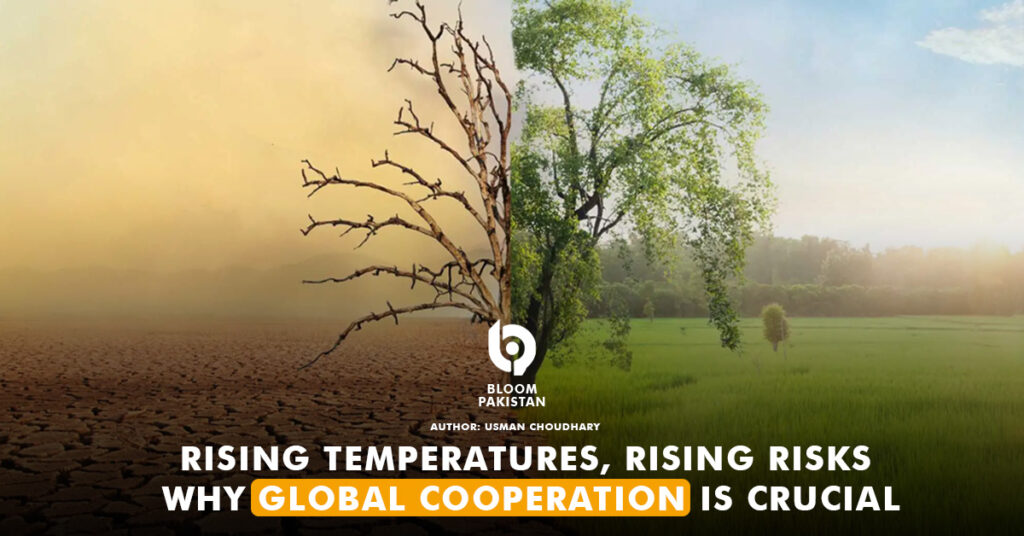January 02, 2025: The health of our planet is deteriorating at an alarming rate. Climate change, deforestation, pollution, and biodiversity loss are just a few of the pressing environmental issues that threaten the very survival of our planet. It’s clear that individual actions alone are not enough to address these complex problems. What’s needed is global collective action – a unified effort from nations, organizations, and individuals around the world to protect the planet.
There is urgent need for collective action. As Human activities are causing irreparable harm to the environment. Climate change, in particular, poses a significant threat to global food systems, economies, and societies. Rising temperatures are melting polar ice caps, raising sea levels, and altering weather patterns, leading to more frequent and intense natural disasters.
The World Health Organization (WHO) estimates that between 2030 and 2050, climate change will cause approximately 250,000 additional deaths per year, mainly due to malnutrition, malaria, diarrhea, and heat stress. 2024 was the hottest year ever recorded. The extremely high temperatures in the air and oceans led to severe weather events worldwide.
In June, over 1,300 people lost their lives during the Haj pilgrimage in Saudi Arabia due to temperatures reaching 51.8C. Extreme heat also caused deaths in Asia and the US. Climate change is not just about extremely hot temperatures. It also causes Warmer oceans to evaporate more water and Warmer air to hold more moisture. This combination leads to heavy rainfall and severe weather events.
In April, the UAE got two years’ worth of rain in just one day, causing massive flooding. Sadly, over 1,500 people died in West and Central Africa due to historic flooding, leaving four million people in need of help.
Pakistan is one of the countries that experienced flooding in 2024 include Afghanistan, Russia, Brazil, China, Nepal, Uganda, India, Somalia and the US.
Pakistan has experienced 29 significant floods. The first recorded flood occurred in 1950, with subsequent major floods in 1955, 1956, 1957, 1959, 1973, 1975, 1976, 1977, 1978, 1981, 1983, 1984, 1988, 1992, 1994, 1995, and then annually from 2010 onwards. In 1995, floods resulted in 2,190 fatalities, affected 10,000 villages, and inundated 17,920 square kilometers of land. Earlier, in 1992, floods caused 1,008 deaths, damaged 13,208 villages, and covered 38,758 square kilometers. The 2010 floods, triggered by an exceptional monsoon, were among the most devastating in the country’s history. They affected 160,000 square kilometers, resulted in 1,985 deaths, and inundated 17,553 villages, according to the Federal Flood Commission (FFC) Annual Report, 2020.
Between 1951 and 2020, Pakistan suffered significant losses due to natural disasters, with 13,262 lives lost, 197,273 villages damaged, and 616,558 square kilometers affected. These events have resulted in nearly Rs39 billion in economic losses. In 2022, catastrophic floods inundated one-third of the country, particularly impacting the provinces of Sindh and Balochistan. The floods affected around 33 million people, causing 1,739 deaths and inflicting $14.9 billion in damage and $15.2 billion in economic losses, according to the government’s damage assessment report.
Overall, while 2022 was marked by devastating floods, the subsequent years demonstrated a shift toward improved management practices and preparedness, contributing to a more resilient approach to future monsoon seasons.
The recent floods in Pakistan and other countries have underscored the urgent need for effective flood management strategies. Best practices that can significantly mitigate the risks and losses associated with flooding. These include enhancing early warning systems to ensure timely alerts, improving infrastructure to manage excess water through better drainage and flood barriers, and implementing sustainable land-use planning that preserves natural wetlands.
